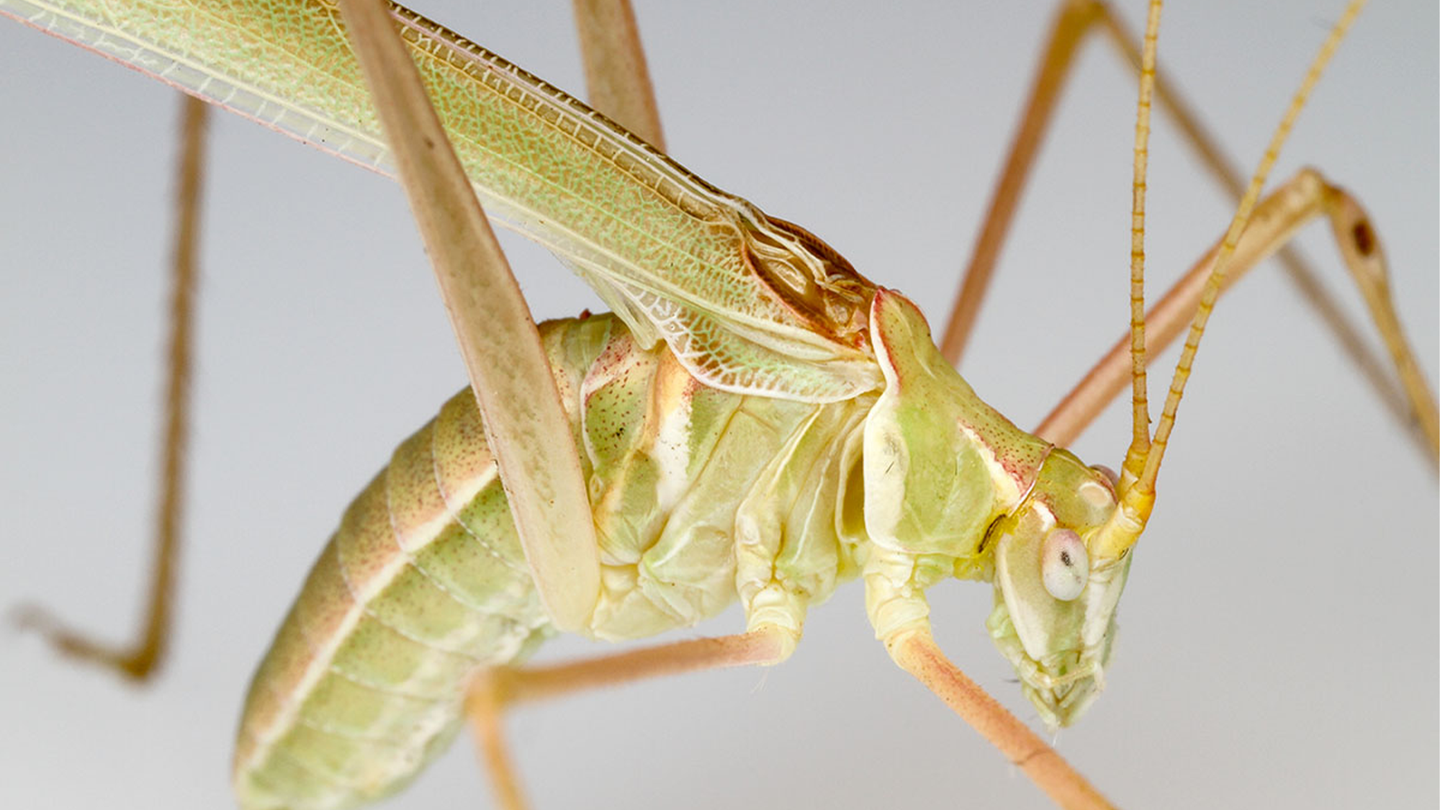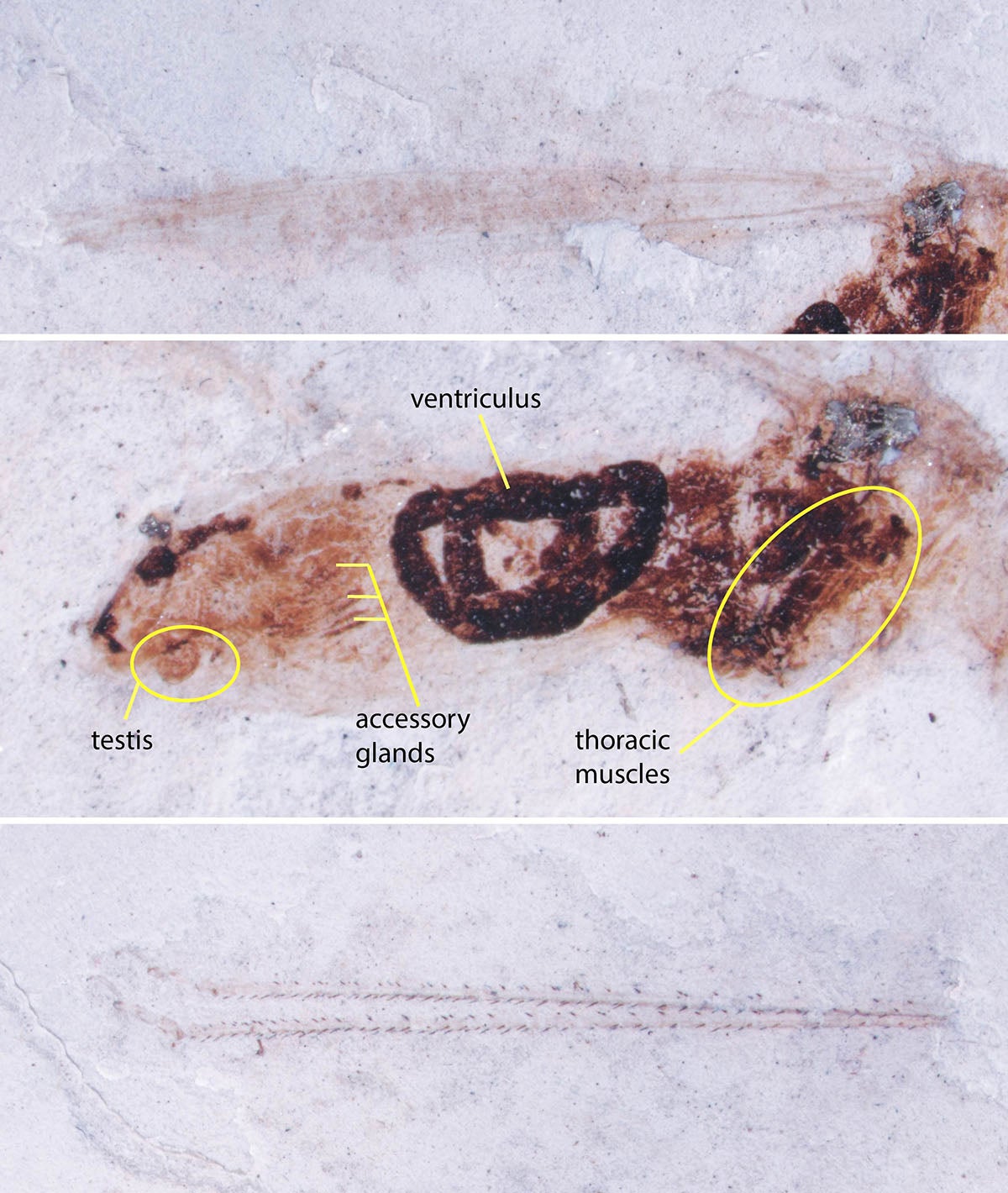
With their soft and spongy tissue, internal organs are rare in the fossil record. But the paleontologists who unearthed the remains of a 50 million year-old katydid hit a bit of a fossil jackpot. Parts of the digestive tract, muscles, glands, and even the testes of an extinct species of this lean-legged insect were preserved along with the bugs’ harder structures. The findings were described in a study published June 23 in the journal Palaeoentomology.
[Related: Bite marks on Triassic fossils show signs of bloody dino decapitation.]
“Katydids are very rare in the fossil record, so any new katydid fossil you find represents a new data point in the evolutionary history of katydids,” study co-author and University of Illinois Urbana-Champaign palaeoentomologist lead Sam Heads said in a statement. “But perhaps the most striking feature of this fossil is the really exceptional, remarkable preservation of internal organs – organs that you just don’t see in fossils.”
The specimen was found in Colorado’s Green River Formation. This enormous fossil bed extends into three western states and boasts fine-grained shales that preserve a good retail of the flora and fauna that once lived there. This new katydid species is extinct and is named
Arethaea solterae in honor of Heads’ colleague and retired insect pathologist Leellen Solter.
“Obviously, having a fossil species of a modern genus is really significant because it confirms the antiquity of this lineage,” Heads said. “Now we know that about 50 million years ago, this genus had already evolved and already had a morphology that mimics the grass in which it lives and hides from predators.”

This rare look inside an extinct insect’s body will help scientists better understand how this group of insects evolved and when their unique physical structure developed over time.
A part of the digestive tract called the ventriculus—where two sets of muscles grind food—was preserved, which is not super unusual, according to Heads. However, when he examined the specimen underneath a microscope, he saw evidence of some surprising internal structures that had been preserved for millennia. Traces of the fibers making up the katydid’s thoracic muscle that are associated with wings were in the specimen, in addition to some tissue called a “fat body,” an organ that helps the insect’s metabolism.
[Related: Fossil trove in Wales is a 462-million-year-old world of wee sea creatures.]
Yet another surprise awaited Heads. “There are these little tubules that all seem to connect to a round structure – and that can only be a testis and accessory glands that are associated with the testis,” Heads said. “That’s just phenomenal. I was not expecting to see that kind of structure preserved in a rock compression. I’ve never seen that before.”
Just to make sure, Heads dissected several katydid specimens in this same genus to match what he was seeing in this 50 million year-old fossil. The accessory glands and ventriculus were the same in the modern day katydids and looked exactly the same. It is potentially the first example of this level of preservation.
The post A 50 million year-old insect testicle is one lucky find appeared first on Popular Science.
Articles may contain affiliate links which enable us to share in the revenue of any purchases made.
from | Popular Science https://ift.tt/uyveA1w




0 Comments